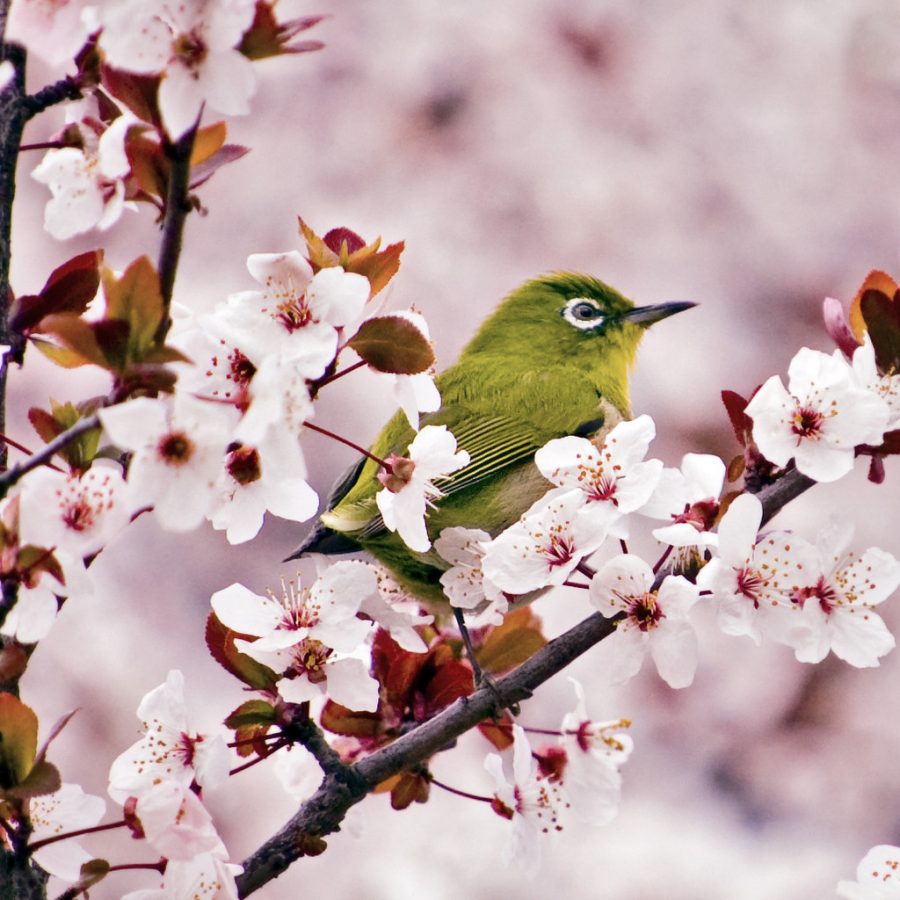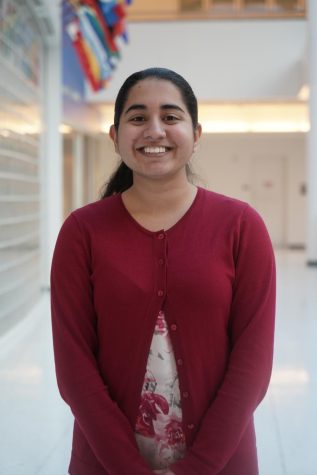Early blooming of cherry blossoms concerns climate experts
April 17, 2021
Thousands of people each year flock to cherry blossom festivals around the world. This year, however, these iconic pink trees are blooming early, and scientists believe climate change and urbanization are at fault.
Japan and Washington, D.C., are known worldwide for their vibrant cherry blossom festivals. In fact, approximately more than 1.5 million people attend the National Cherry Blossom Festival in Washington, D.C., every year.
Though cherry blossoms are native to Japan, they are not native to the United States. At least not until 1912, when Japan gifted the district some cherries as a token of friendship, according to Arlington National Cemetery.
Cherry blossoms hold significant meaning in Japan, as they are a symbol of renewal. They also symbolize how quickly life passes, evident in the fact that cherry blossoms don’t last longer than ten days after they reach peak bloom, the day “when 70% of the Yoshino Cherry blossoms are open.”
Ordinarily, cherry blossoms in Washington, D.C., bloom toward the end of March and the first week of April, according to the National Park Service.
This year, however, cherry blossoms in the district were reported to reach peak bloom on March 31. Though this bloom time adheres to the expected timeframe by falling in the last week of March, it comes a week earlier than the original predicted date of April 5. This follows a pattern of earlier blooming.
In fact, the latest cherry blossoms bloomed in the United States was April 18 in 1958, while the earliest was March 15 in 1990. In 2020, the flowers reached peak bloom on March 20, significantly earlier than the year prior on April 1.
Some may say that the recent peak period dates fall close enough to each other, so there is no need to be concerned. Upon looking at Japan’s data on cherry blossoms blooming, there is clearly a commonality of later bloom times.
Yasuyuki Aono, a researcher and professor at Osaka Prefecture University, has gathered records of the peak bloom dates of cherry blossoms in Kyoto, Japan, dating back several centuries. After examining different documents, he found that the cherry blossoms’ bloom date this year hasn’t occurred since 812 AD. This year, Kyoto’s cherry blossoms peaked on March 26, the earliest time in more than 1,200 years.
The Washington D.C., data, coupled with findings from Japan, has left scientists worried about how climate change is impacting these cherry blossoms.
“As global temperatures warm, the last spring frosts are occurring earlier and flowering is occurring sooner,” Dr. Lewis Ziska from Columbia University’s Environmental Health Sciences said.
Aono agrees that rising temperatures over the years are directly responsible for earlier bloom times. This year, winter reached record low temperatures, while spring has been warmer than usual.
“Sakura blooms are very temperature sensitive,” Aono said. “Flowering and full bloom could be earlier or later depending on the temperature alone,” he said. “The temperature was low in the 1820s, but it has risen by about 3.5 degrees Celsius,6.3 degrees Fahrenheit, to this day.”
While flowers blooming earlier in spring may seem ideal for photographers and plant lovers, researchers are worried how the earlier blooms will affect pollination.
Matthew Austin, an ecologist and biodiversity postdoctoral fellow with the Living Earth Collaborative at Washington University, is testing how bees will be impacted by the changing temperatures.
“My work is testing whether these altered flowering times are increasing rates of pollen transfer between different species,” Austin said. “And if that’s the case, I predict that high rates of pollen transfer between different species is leading to higher rates of self-fertilization.”
Warmer temperatures could cause other plants to bloom early as well. With so many plants blooming at once, bees are left with a dizzying amount of plants to choose from, resulting in possible cross pollination.
“Pollen transferred to the wrong flower is basically a reproductive dead end,” according to News Wise.
Animals can also be affected negatively. While flowers like cherry blossoms respond to climate change with premature blooming, some animals may change their lifestyles to adapt to changing temperatures as well.
This means that some animals could leave for higher altitudes where it is colder, which in turn disrupts the ecosystem.
In Washington, D.C., for example, though many cherry blossom trees are planted by people, birds are attracted to the flowers and carry away seeds and pollen from the flowers. The seeds then drop across the district, causing new trees to grow, according to the National Park Service.
Cherry blossoms blooming earlier also indicates a global problem.
Amos Tai, an associate professor of Earth System Science at the University of Hong Kong, said that the farmers have a much harder time predicting when they will have a good year, when they will have a bad year. “Agriculture now is more like a gamble, because climate change is randomizing the things happening in our ecological systems,” Tai added.
In terms of crops and agriculture, climate change translates to more severe weather like droughts, floods, or even swarms of insects that could significantly reduce crop years, according to National Geographic. As a result, people around the world could be left with less food and little means of obtaining it.
As people enjoy the sights of blooming cherry blossoms in their own neighborhoods, revelers should note that their beautiful arrival is not just a sign of renewal. These flowers are a warning of agricultural ruin and disrupted ecosystems to come if climate change is not taken seriously.









Miles Aiken • Sep 29, 2021 at 1:03 am
THIS IS A VERY IMPORTANT ARTICLE THAT NEEDS TO BE EXPANDED AS A REPORT. YOU SHOULD COVER THE EFFECTS LOCALLY. THIS IS A WARNING LIKE THE ARTICLE OF THE LACK OF WARNING IN THE ARTICLE ON HENRI AND IDA ON NEW YORK..
I LEFT A COMMENT ON THAT PAGE ALSO AND SPORTS. . MILES AIKEN